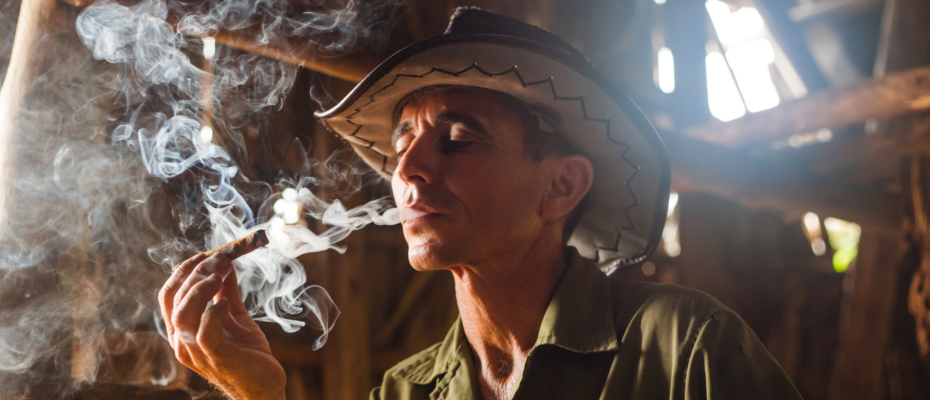[Editor’s note: Click the images in this photo essay
to see them rendered at full-size.]
In Cuba, everything seemed temporal, distorted by the sun.
There’s a magic here working its way through my veins. There’s something about the vegetation, too, that I respond to instinctively—the stunning bougainvillea, the flamboyants and jacarandas, the orchids growing from the trunks of the mysterious ceiba trees. And I love Havana, its noise and decay and painted ladyness.
—Dreaming in Cuban, “Baskets of Water” and “Six Days in April,” Cristina García
When I accepted a last-minute invitation to join some friends in Havana, I knew only that I hoped to quench a lingering thirst for nostalgia, an appetite that made its home in the back of my throat, like the lump one gets when on the verge of tears. The island’s wet air settled on my pale skin as soon as I left the airport terminal to hail my classic Chevy cab.
El Morro lighthouse stands, like so much of Havana, as a beacon that points to a city that once was. The fortress was established in the 1760s, and the lighthouse was added one hundred years later. The fortress walls must have felt then like an impenetrable barrier, like a stout retort to the port of Miami, a mere ninety miles to the north. As Joan Didion said, “Havana vanities come to dust in Miami.”1



El Malecón, a long esplanade that runs the entire length of Havana harbor, was built as a seawall to protect the island’s shores from the crashing waves of Caribbean squalls. With its cool ocean winds, it’s become the central gathering spot for habanitos on hot nights, the spot for lovers and their trysts. In recent years, it has also drawn the attention of developers who have attempted large-scale projects to rival their counterparts in Miami. These efforts seek to re-create the glittery appeal that brought so many US tourists to the island between World War I and World War II. I wondered, as I walked into the breeze, about the seductive charm of always looking backward and about this tension between history, development, and the economic necessity of bringing jobs to Cuba’s working class.
On New Year’s Day, we visited Museo de la Revolución. Oddly enchanted by the writings of Che Guevara and vexed by homages to Fidel and Raúl Castro, I watched as dozens of pickup fútbol games broke out on the streets outside. I couldn’t help but compare these young men to their guerilla grandfathers, to wonder at what the revolution begot. A few hours later, the sunset that fell lit the plaza on fire.
As I wandered the streets of la Habana Vieja (Old Havana), it was easy to imagine the grandeur that once was, but the streets and buildings have now deteriorated, and the signs of poverty are everywhere. Once again, I was struck by the interplay of contrasts, as colorful shouts rang out from the apartment dwellers, wrought-iron balcony sitters, and rum pourers, coaxing us to smile.



The most pleasurable tourist experiences in Cuba happen when one least expects them, serendipitous little undeserved happenstances that make the journey all the more rewarding. Here, a paladar—the name for a private, not state-run restaurant—was drying its table linens. The clean white linens, the warm light and vaulted ceilings, the walls hung with thoughtful contemporary art that Gertrude Stein would have coveted for her own salon—it made me feel as if I had entered another time and place. And indeed, la Guarida markets its dining as “the experience of being anchored in history, stamped by daily life, with a hope for the future.”
We stayed in an apartment on the tree-lined streets of Vedado. The greens there were flamboyant and lush, and the rubble was rare. Newer than la Habana Vieja and other more touristy neighborhoods on the water, Vedado has been described as the city’s most affluent district. We were there over the holiday season, a time when even the poorest Cuban families save their monthly allowance to roast the family a pig. The warm air was made warmer by the smell of fire and salt.


Opi, our gracious host, was a Renaissance man: a father, a mechanic, a restaurateur. He was a man who seemed to want everything and yet gave everything in return. Opi, we learned, was trying to live outside the Cuban system of allowances and rations, devising ways to earn more than the government’s allotted thirty dollars a month, in part so that he could share even more generously.2
Alexis Hernandez, who has worked as a professional dancer, choreographer, and scuba instructor, and his wife, who is French by birth, help run the restaurant Opi opened in his home. We were fortunate enough to stay as guests in their home, a large house with stately high ceilings, a grand staircase, and balconies on every window. Despite the echoes of opulence, many of the rooms lacked electricity or running water, and there was very little furniture. In this place, they seemed to savor the simple quotidian pleasures of an artist life without the hustle—or the mobility—of their European colleagues.
Our favorite meal while we were in Cuba was served on the porch of el Paraiso, a diner’s monastery in the Valley of Silence. The food we ate there was harvested only a few feet away in the family’s finca or organic farm. The traditional meal was served family-style, course after course followed by aged rum and coffee. Given the food rations in Havana, the bounty we consumed there felt extravagant.
And as any Habanito would, we ended our trip on el Malecón, the place where memories are made. We danced under the stars and stared out onto the sea that has kept so many Cubans here.
- Didion, “Miami,” New York Review of Books, May 28, 1987, http://www.nybooks.com/articles/1987/05/28/miami/.
- To avoid unintended repercussions for Opi, I have not included his surname here.











